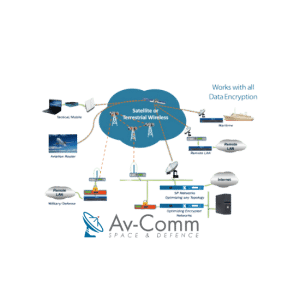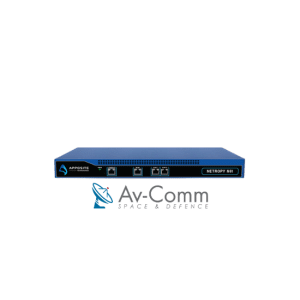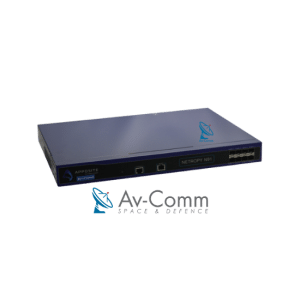XIPLINK – IP Compression HUB Platform
XipOS Hub Optimisations (“XHO”) feature bandwidth savings and performance enhancements that operate on a standalone appliance located at the hub-side or Internet point of presence in a wireless network.
Description
Description
XipOS Hub Optimisations (“XHO”) feature bandwidth savings and performance enhancements that operate on a standalone appliance located at the hub-side or Internet point of presence in a wireless network. These features operate on unencrypted web traffic and are implemented in the XA-30K and XA-10K appliances that are installed in-line in the path from the Internet to the wireless network and the remote sites.
XHO features transparently intercept web pages and optimise the contents to conserve bandwidth. XHO options can typically deliver a 1.5 compression ratio or 33% bandwidth savings with no discernable changes to the majority of web content.
The XHO feature set provides Hub side bandwidth optimisation for service providers, saving bandwidth and increasing performance. The solution when implemented in any network will help increase revenues or significantly decrease operational costs. By using less bandwidth and when used in conjunction with XipOS “push” TCP acceleration capabilities, web pages are also delivered considerably faster to the user, thus enabling an service provider to offer differentiated services.
The XHO solution is simple and easy to deploy as it resides on the Hub side only with many deployment options available. No client software or configuration changes are required. The highly scalable Hub appliances can be used to provide Two-Way Optimisation where required, by deploying a smaller XA appliance at selected remote sites.
XiPixTM – JPEG Image Compression
XiPix transparently transcodes images from the quality at which they are received from a web site to a lower quality JPEG image resulting in a much smaller file for downstream transmission. The bandwidth savings are dramatic with only a minor impact on the user experience. The dimensions and pixel counts of XiPix processed images remain unchanged so there is never an impact on the web page display itself. Instead, XiPix algorithms exploit the fact that Internet content producers frequently set an unnecessarily high quality setting for JPEG images when saved for use on web sites.
Each network operator can select the image quality metric they are most comfortable with, trading off the bandwidth savings this feature can deliver to customer perception of the image.
In our experience, it is quite difficult to detect changes in images that were saved with the default JPEG quality setting and the lower quality XiPix processed image. Thus, the settings become a policy and preference decision by the service provider. The full resolution version of the images can be accessed by users by doing a forced reload on the page (Control-Shift-R on most web browsers).
HTTP Compression – Gzip Compression Gateway
GZIP one-way compression automatically compresses non-image web site content using HTTP compression standards, which can be automatically and transparently de-compressed by all modern web browsers. This XHO feature will compress this data for transmission over the wireless network, where each browser can uncompress that data transparently to the user. The combination of XiPix and GZIP HTTP compression results in dramatic bandwidth savings.
One-Way SCPS TCP Acceleration
Used at the hub of a network, a XipLink device can provide single-sided benefit for the acceleration of all TCP/IP traffic. It will mainly benefit the ‘push’ or outbound flow of TCP/IP data, but there is a small gain to be had from the return channel as well.
QoS – Bandwidth Control and Shaping
The XipLink devices have an advanced QoS functionality built-in, which works along with other optimisation functions. This provides operators with the ability to prioritise and shape traffic using a Hierarchical Class Based Queuing technology. In addition, the operator can configure committed, maximum and relative priorities. In combination with TCP acceleration, the network pipe can be filled to its maximum and shaped to match network goals or SLAs.
Scalable – Two-way optimisation and full SCPS Interoperability
The Hub appliances can be used to provide two-way optimisation to the premium sites, by deploying a XipLink optimisation solution at the remote site. The remote site will gain the full benefit of SCPS based protocol acceleration and stream data compression in both the upstream and downstream directions. This is useful for sites that may be moving content upstream or sites that require the absolute maximum capacity from a wireless link.
Conclusion
The XipLink XHO feature set provides a quick and straight-forward hub only deployment for service providers with about 30-40% overall Internet traffic bandwidth savings. A typical ROI for this solution is about 4 Months. A service provider can extend optimisation benefits with XipLink Two-way optimisation where the bandwidth gain can be as high as 400%. This not only improves User satisfaction with high performance and highly responsive network, but is also scalable to support multiple networks (point to point, multipoint, shared, SCPC, TDMA, meshed, etc.) from one appliance.
Key Features
| XiPixTM – JPEG image transcoding – Lossy Compression |
| GZIP – Compression of HTTP data – Lossless Compression |
| TCP Acceleration – One way TCP acceleration |
| QoS – Shaping and bandwidth control of traffic |
Additional information
Additional information
| Weight | 0.5 kg |
|---|---|
| Dimensions | 12 × 12.4 × 5 cm |
| SKU | XIPL-001 |
Let us do your dishes for you
Let our team of field-engineers and technicians find innovative and smart solutions to your communications challenges.


















